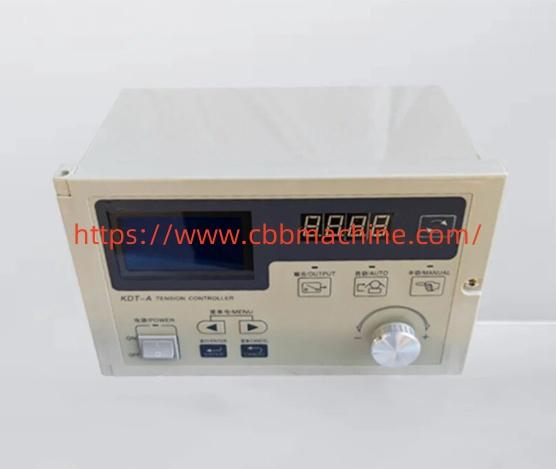In the field of industrial automation and web processing, the Tension Controller serves as an integral part of achieving consistent product quality and operational balance. Whether dealing with films, foils, paper, or textile materials, this device ensures precise tension regulation throughout production. Maintaining stable tension is vital in avoiding issues like wrinkling, stretching, or material breakage, which can compromise efficiency and cause costly interruptions.
The primary function of this control unit is to monitor and adjust the pulling force applied to a moving web. It operates through sensors that detect tension changes and automatically send feedback to maintain a constant balance between input and output torque. This self-regulating feature helps ensure smooth material flow and uniform winding or unwinding, resulting in better alignment and improved final product appearance.
A well-calibrated system plays a major role in production consistency. In high-speed environments, even slight tension fluctuations can lead to visible defects or misalignment. By integrating a reliable controller, operators gain stable performance and improved control, especially when multiple rollers or spindles are involved. This precision also helps extend machine lifespan by minimizing mechanical stress and wear on components.
There are various types of control systems, including automatic, manual, and digital models, each tailored to different production demands. Automatic controllers adjust tension dynamically in response to sensor feedback, while manual types allow operators to fine-tune control according to material characteristics. Advanced digital systems integrate with PLCs and smart monitoring devices, enabling remote supervision, data analysis, and process optimization.
The design of such devices often emphasizes durability and compatibility. They are built to handle continuous operation in industrial environments while remaining easy to install and maintain. Modern versions also focus on energy efficiency, helping to reduce operational costs and environmental impact. As industries evolve, these systems are increasingly designed to support smart manufacturing setups, offering seamless communication with other automation equipment.
Choosing the right control system involves understanding the characteristics of the material being processed, the line speed, and the level of precision required. For example, thin or elastic materials demand highly responsive tension control to maintain uniformity. On the other hand, heavy materials require stronger torque management to prevent slippage. Partnering with a trusted supplier ensures that each application receives the right configuration for optimal performance.
Overall, consistent tension management directly impacts product quality, efficiency, and cost-effectiveness. As automation and digitalization continue to advance, the importance of intelligent tension control will only grow, supporting industries in achieving smoother, more reliable production workflows.



